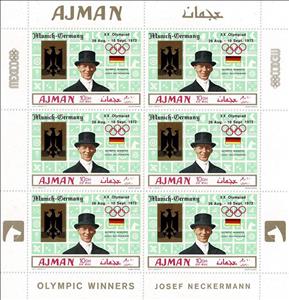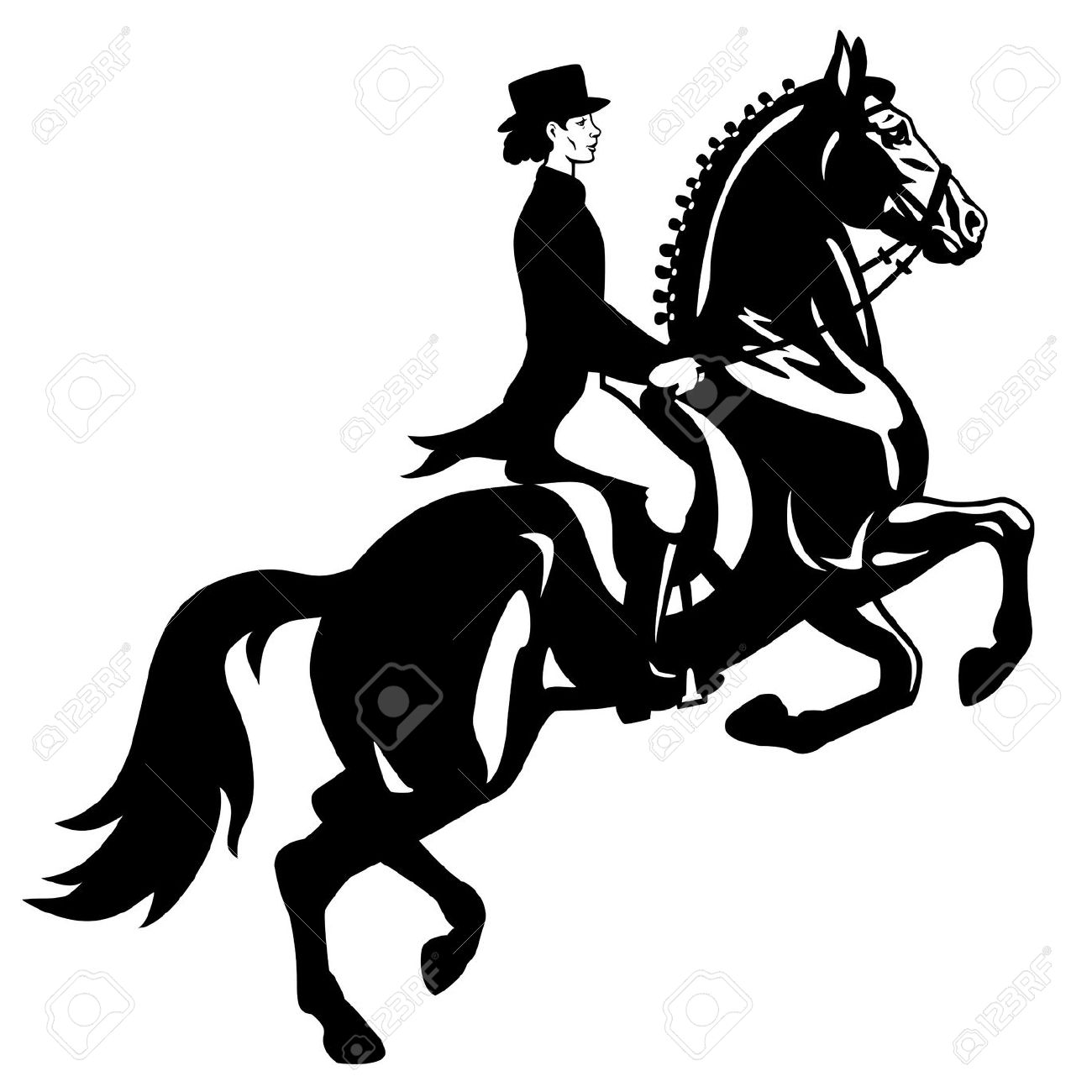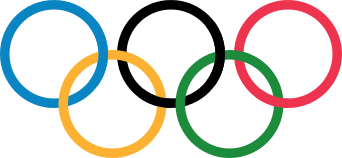Full Pane: Josef Neckermann (Ajman 1969)
Josef Neckermann (Ajman 1969)
10 August (Ajman ) within release Munich-Germany XX Olympiad goes into circulation Full Pane Josef Neckermann face value 6*10 United Arab Emirates dirham
| Full Pane Josef Neckermann in catalogues | |
|---|---|
| Colnect codes: | Col: AJ 1969.08.10-11d |
Full Pane is square format.
Not mentioned by MichelAlso in the issue Munich-Germany XX Olympiad:
- Souvenir Sheet - Reiner Klimke face value 5;
- Souvenir Sheet - Lieselotte Linsenhoff face value 10;
- Souvenir Sheet - Josef Carl Peter Neckermann (1912-1992), Dressage, Germany face value 5;
- Stamp - Reiner Klimke face value 5;
- Souvenir Sheet - Josef Carl Peter Neckermann (1912-1992), Dressage, Germany face value 10;
- Full Pane - Josef Neckermann face value 6*10;
- Full Pane - Josef Neckermann face value 6*10;
- Full Pane - Lieselotte Linsenhoff face value 6*10;
- Full Pane - Liselott Linsenhoff (1927-1999), Dressage, Germany face value 6*10;
- Full Pane - Reiner Klimke face value 6*5;
- Full Pane - Reiner Klimke face value 6*5;
Full Pane Josef Neckermann it reflects the thematic directions:
A coat of arms is an heraldic visual design on an escutcheon (i.e. shield), surcoat, or tabard. The coat of arms on an escutcheon forms the central element of the full heraldic achievement which in its whole consists of shield, supporters, crest, and motto. A coat of arms is traditionally unique to an individual person, family (except in the United Kingdom), state, organisation or corporation.
Stemming from military practices and a long tradition of teaching by equestrians such as La Guérinière and François Baucher, traditional French equestrianism is essentially represented at the Cadre Noir de Saumur. The practice of equestrianism has evolved towards sport and leisure, opening up to the general public. At the end of the 20th century, the sport became much more democratic, with a sharp rise in the number of riders, particularly young people and women. The teaching of equestrianism as a leisure sport in France is based on the existence of over 8,000 riding schools, which make trained horses available to the public. Their establishment is supported by the French government thanks to a reduced VAT rate from 2004 to 2013. At the end of 2013, riders and industry professionals protested against the increase in VAT on their activity.
A flag is a piece of fabric (most often rectangular or quadrilateral) with a distinctive design that is used as a symbol, as a signaling device, or as decoration. The term flag is also used to refer to the graphic design employed, and flags have since evolved into a general tool for rudimentary signalling and identification, especially in environments where communication is similarly challenging (such as the maritime environment where semaphore is used). National flags are patriotic symbols with varied wide-ranging interpretations, often including strong military associations due to their original and ongoing military uses. Flags are also used in messaging, advertising, or for other decorative purposes. The study of flags is known as vexillology, from the Latin word vexillum, meaning flag or banner.
Headgear may be worn for protection against cold (such as the Canadian tuque), heat, rain and other precipitation, glare, sunburn, sunstroke, dust, contaminants, etc. Helmets are worn for protection in battle or against impact, for instance when riding bicycles or motor vehicles. There are also hats that are worn for protection from the cold
A man is an adult male human. Prior to adulthood, a male human is referred to as a boy (a male child or adolescent).
The modern Olympic Games or Olympics (French: Jeux olympiques) are leading international sporting events featuring summer and winter sports competitions in which thousands of athletes from around the world participate in a variety of competitions. The Olympic Games are considered the world's foremost sports competition with more than 200 nations participating. The Olympic Games are held every four years, with the Summer and Winter Games alternating by occurring every four years but two years apart.
Sport is a form of physical activity or game. Often competitive and organized, sports use, maintain, or improve physical ability and skills. They also provide enjoyment to participants and, in some cases, entertainment to spectators. Many sports exist, with different participant numbers, some are done by a single person with others being done by hundreds. Most sports take place either in teams or competing as individuals. Some sports allow a "tie" or "draw", in which there is no single winner; others provide tie-breaking methods to ensure one winner. A number of contests may be arranged in a tournament format, producing a champion. Many sports leagues make an annual champion by arranging games in a regular sports season, followed in some cases by playoffs.







